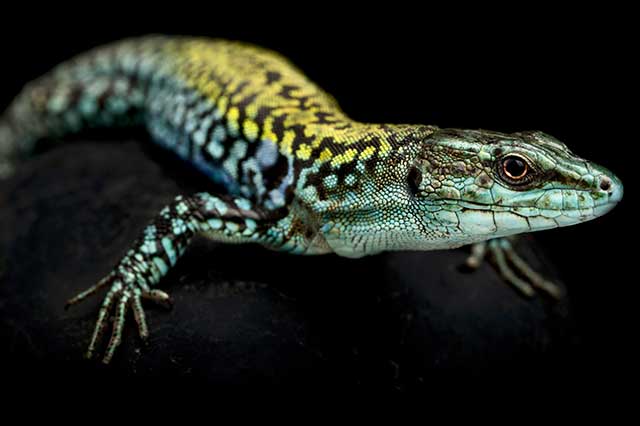Are you interested in entering the captivating realm of pet skinks? You’ve landed in an ideal space. Among the numerous reptiles suitable as pets, skinks emerge as compelling creatures, particularly for beginners venturing into reptile care. Choosing the optimal species for a novice reptile keeper can be an exhilarating yet challenging endeavor. However, worry not, as we’ll navigate through the journey, identifying skink species that are both manageable and immensely gratifying for amateur reptile enthusiasts.
What are Skinks?
Skinks belong to a diverse group of reptiles known for their unique physical characteristics and behaviors. They’re commonly found in various habitats worldwide. They are are renowned for their sleek bodies, typically covered in scales, and their distinctively smooth appearance. These creatures are revered for their agility and adaptability in different environments, making them fascinating subjects for observation. Skinks play integral roles in their ecosystems, contributing to the delicate balance of nature. Overall, they’re captivating reptiles that showcase the beauty and diversity within the natural world.
Why Skinks Make Great Pets
Skinks, with their diverse species and captivating characteristics, are an excellent choice for beginners entering the world of reptile pet ownership. These small to medium-sized lizards display a wide range of colors, patterns, and behaviors, making them both visually appealing and intriguing to observe. Their manageable size and relatively docile nature, compared to other reptiles make them an ideal choice for someone new to reptile care.
Choosing the Right Skink Species
When it comes to selecting the best skink species for beginners, a few factors need consideration. Ease of care, temperament, and availability are crucial aspects. Among the various species, some stand out as particularly suitable for beginners.
1. Blue-Tongued Skink (Tiliqua scincoides):

– Temperament: Generally docile and friendly, making them suitable for beginners.
– Features:Characterized by their blue tongue, stocky body, and distinct markings.
– Origin: Indigenous to Australia and New Guinea.
2. Fire Skink (Lepidothyris fernandi):

– Temperament: Typically active and display vibrant colors. They can be shy initially but often become more comfortable with time.
– Features: Bright red or orange coloration with black markings, sleek body, and long tail.
– Origin: Native to West Africa, particularly regions of Ghana and Nigeria.
3. Five-Lined Skink (Plestiodon fasciatus):

– Temperament: Generally skittish and may be less tolerant of handling compared to other species.
– Features: Dark stripes along the back, typically brown or black in color.
– Origin: Native to North America, primarily found in woodland habitats.
4. Australian Rainbow Skink (Carlia tetradactyla):

– Temperament: Usually skittish but can become accustomed to handling with patience.
– Features: Varied colors, typically with hues of blue, green, and yellow.
– Origin: Indigenous to Australia, commonly found in wooded areas.
5. Italian Wall Lizard (Podarcis siculus):

– Temperament: Often active and agile. May require more space and a varied diet compared to some other species.
– Features: Diverse color variations including green, brown, and sometimes blue.
– Origin: Native to regions of Italy and surrounding Mediterranean countries.
Care and Habitat Requirements
Understanding the specific care and habitat needs of the chosen skink species is vital for their well-being. Different species might require varying levels of humidity, temperature, and enclosure size. Providing a suitable habitat with adequate heating, lighting, hiding spots, and a proper diet tailored to the reptile’s species’ needs is paramount for their health and happiness.
Diet
While discussing the best skink species for beginners, it’s crucial to touch upon their dietary needs, ideal enclosure setup, and handling tips. They are omnivorous, so a balanced diet consisting of insects, fruits, and vegetables is essential.
Enclosure Setup and Handling Tips
The enclosure setup should mimic their natural habitat, incorporating substrate, temperature gradients, and suitable hiding spots. Additionally, handling your pet should be done gently and infrequently to minimize stress.
Key Takeaways
To sum up, selecting the best skink species for a beginner involves careful consideration of various factors such as temperament, ease of care, and specific needs. Skinks, with their captivating appearance and manageable nature, offer a delightful entry point into the world of reptile keeping. By understanding their requirements and providing a suitable environment, beginners can enjoy a fulfilling journey as responsible skink owners.
